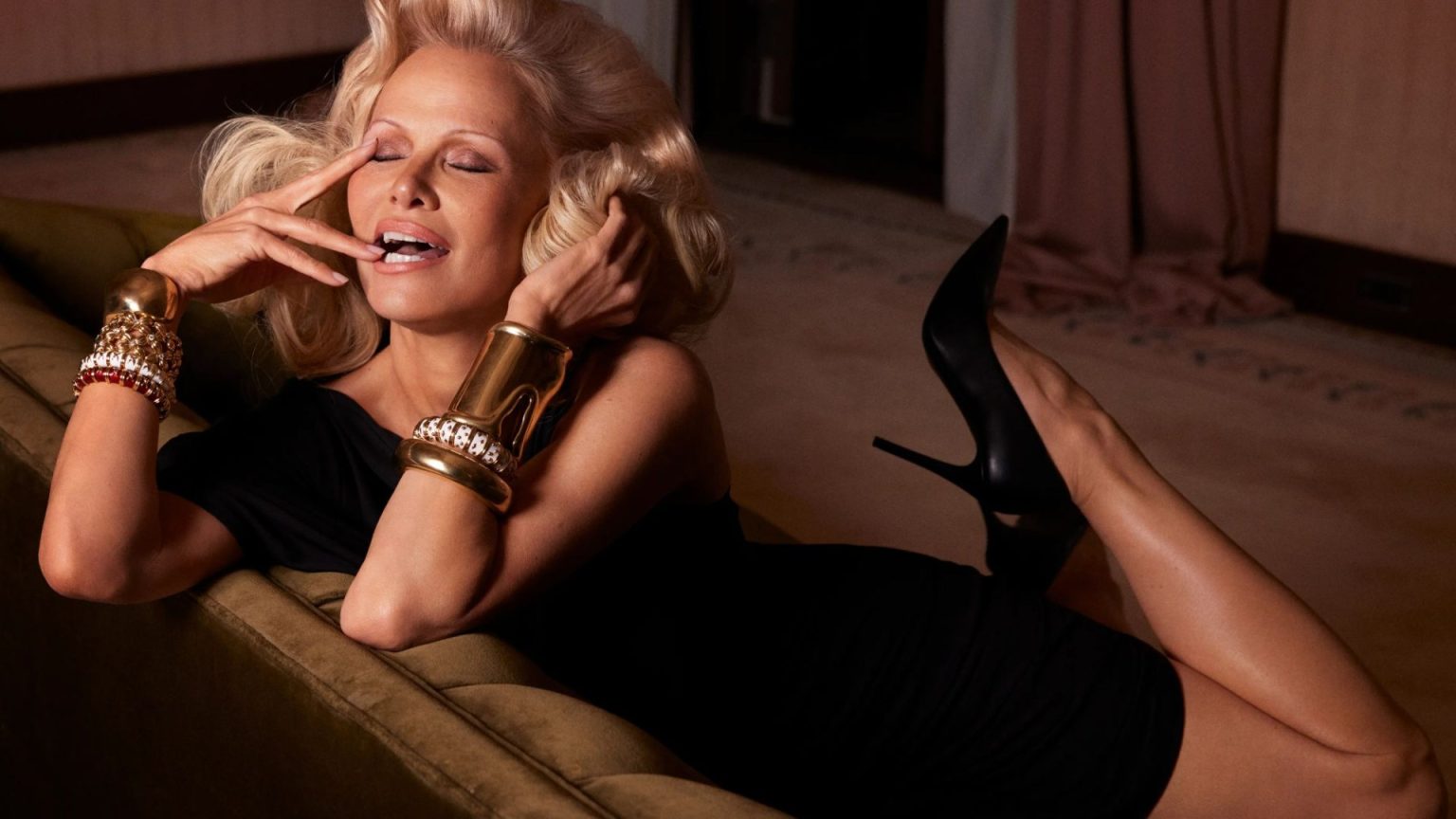Pamela Anderson, the iconic actress synonymous with Baywatch, recently captivated audiences with a stunning photoshoot for W Magazine, gracing the publication’s pages in a chic black dress, heels, and bangles just prior to the Golden Globes. The occasion marked a significant moment in her career, as she was highly anticipated to make a triumphant return to the spotlight and potentially secure the Best Actress in a Drama award for her compelling performance in the upcoming film, “The Last Showgirl.” This resurgence of attention surrounding Anderson highlighted her transition from a sex symbol to a serious actress, a transformation underscored by the buzz surrounding her latest project.
“The Last Showgirl,” a film already generating Oscar buzz following the release of its trailer, showcases Anderson in a role far removed from her previous work. She embodies Shelly, a Las Vegas showgirl whose glamorous exterior masks a deep well of internal struggles. The trailer opens with a poignant image of Shelly, adorned in glittering sequins, trembling with emotion as she prepares to take the stage. While her outward appearance exudes dazzling beauty, her tear-filled eyes hint at the underlying turmoil she experiences, immediately establishing a complex and intriguing character.
The trailer then weaves together glimpses of Shelly’s life both on and off stage, interspersed with Anderson’s introspective voiceover. Her musings offer a poignant reflection on the changing landscape of Las Vegas and the fading allure of the showgirl persona. Shelly’s words speak of a bygone era when showgirls were treated like royalty, embodying style and grace as ambassadors of the city’s entertainment scene. They also reveal her deep-seated yearning for validation and beauty, a powerful desire she acknowledges as essential to her identity. However, her words also betray a profound sense of discontent, suggesting that the glamour she projects masks a deeper struggle with a profession that she no longer loves.
The trailer’s impact is amplified by the combination of visually arresting cinematography and Anderson’s emotionally charged portrayal of Shelly. Critics have praised the film’s aesthetic beauty and lauded Anderson’s performance as her best to date. This recognition signals a significant shift in the perception of Anderson as an actress, acknowledging her ability to convey depth and vulnerability, challenging past dismissals of her talent. “The Last Showgirl” presents an opportunity for Anderson to defy decades of criticism and showcase her true acting prowess. The film resonated with audiences not only for its captivating narrative but also for its meta-narrative reflection of Anderson’s own career trajectory, a journey marked by both public adoration and periods of being underestimated.
The parallels between Anderson’s personal experiences and Shelly’s struggles are evident, further intensifying the emotional resonance of the film. Like Shelly, Anderson has often faced scrutiny and been objectified throughout her career. The film provides a platform for Anderson to confront these experiences, reclaiming her narrative and demonstrating her multifaceted talent. “The Last Showgirl” represents more than just a comeback; it marks a transformation, allowing Anderson to redefine her public image and solidify her status as a serious actress capable of delivering powerful and nuanced performances.
The anticipation surrounding “The Last Showgirl” and Anderson’s potential award recognition signify a turning point in her career. Her captivating portrayal of Shelly has garnered critical acclaim and resonated with audiences, suggesting a renewed appreciation for her talent beyond her iconic Baywatch image. The film’s exploration of themes such as aging, identity, and the search for fulfillment, coupled with Anderson’s deeply personal performance, positions “The Last Showgirl” as a potentially significant moment in cinema, marking not only a comeback for Anderson but also a powerful statement about resilience, reinvention, and the enduring pursuit of dreams.


